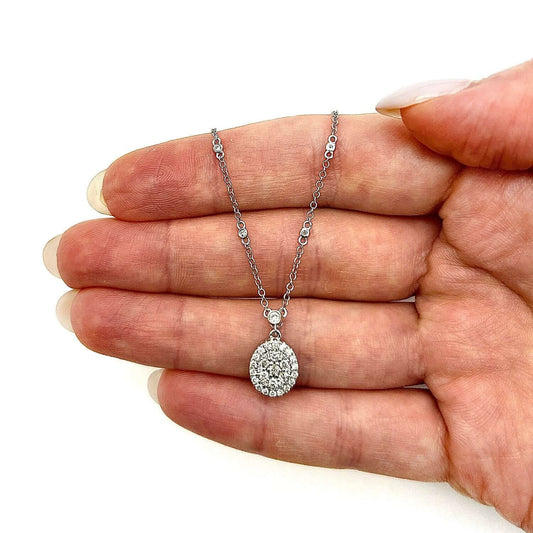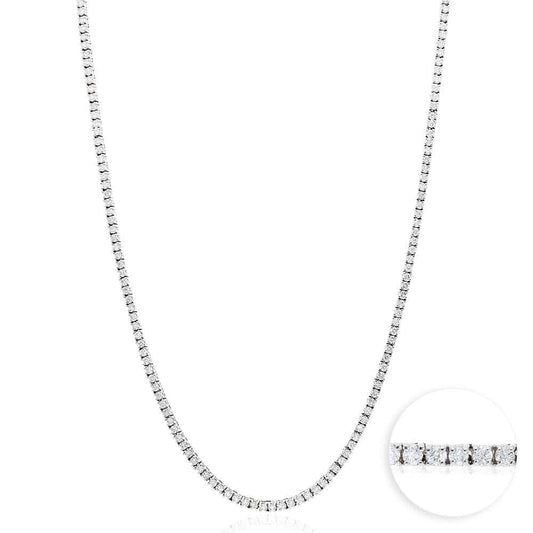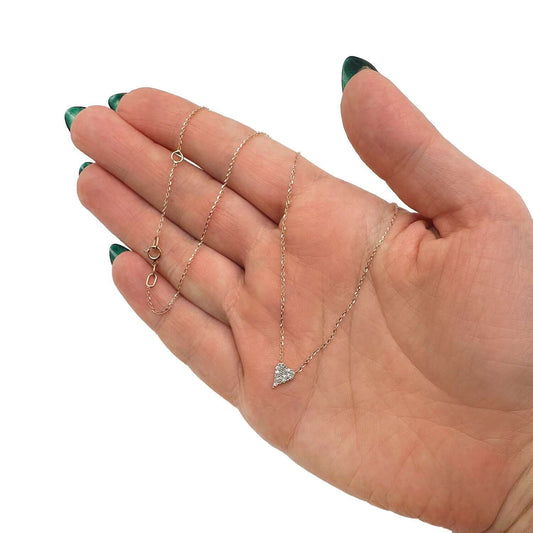
The Art of Diamond Necklaces: Design, Styles, and Types
Introduction
Diamond necklaces have been associated with class, refinement, and classic beauty for a very long time. Diamond necklaces have a distinct position in the world of fine jewelry, whether they are worn to enhance one's sense of style or bestowed to commemorate a momentous occasion. Every item is a tribute to the artistry and ability of trained craftspeople who turn simple materials into magnificent works of art. These designs, which range from elaborate diamond pendant necklaces to striking statement pieces like diamond cross necklaces, capture the wearer's imagination in addition to the beauty of the diamonds.
The Design Journey of Diamond Necklaces
A diamond necklace is meticulously created by combining creativity, artistry, and accuracy. Every necklace starts as an idea, molded by the artist's imagination and careful attention to detail. From conception to completion, the process involves more than just putting priceless materials together; it also involves creating a timeless item that speaks to the wearer. The design process makes sure that every necklace is both aesthetically pleasing and significant, whether it's a traditional diamond pendant necklace or a contemporary statement piece.

Conceptualizing the Perfect Diamond Pendant Necklace
Every diamond pendant necklace starts with an original concept, which is frequently motivated by humorous stories, the beauty of the world, or the newest styles in fashion. Designers are inspired by a variety of things, such as the romantic appeal of a diamond heart necklace, the symbolism of a diamond cross necklace, or the exquisite simplicity of a solitaire pendant. The idea is to design a piece that expresses the wearer's individuality and sense of style while also showcasing the diamond's beauty.
The Allure of Specific Styles in Diamond Necklaces
There are many different styles of diamond necklaces, and each has its special attraction and meaning. Some styles are more notable than others for their beauty and symbolism, whether you're searching for something with deep meaning or just want to make a statement. The diamond heart necklace and the diamond cross necklace are two of the most beloved styles, both possessing an ageless elegance.
The Elegance of Diamond Cross Necklaces
Beyond just being beautiful jewelry, diamond cross necklaces are frequently worn as expressions of devotion and religion. The cross's spiritual importance combined with the classic dazzle of diamonds results in a design that is both powerful and exquisite. These necklaces are available in a range of styles, from straightforward, simple crosses with a single row of diamonds to more elaborate versions with extra embellishments.

Celebrating Love with Diamond Heart Necklaces
Due to their long-standing associations with passion and love, diamond heart necklaces are popular choices for meaningful gifts and special occasions like anniversaries and Valentine's Day. The heart shape itself represents love, and the necklace is made even more exceptional by the diamonds that have been added.
Crafting Techniques for Exquisite Diamond Necklaces
A diamond necklace needs to be made with expert craftsmanship, accuracy, and attention to detail. Every choice you make affects the final piece's longevity and beauty, from the metals to the diamond settings. The method of setting the diamonds and the choice of gold for the design are two important factors that determine a diamond necklace's excellence.
Mastering the Art of Setting Diamond Necklaces
One of the most important elements in ensuring a diamond necklace's durability and visual appeal is the setting. To maximize light transmission and boost the brilliance of the stones, diamond settings need to be made to hold the stones firmly in place. Prong, bezel, and pavé settings are popular methods of setting diamonds; each offers a different appearance and degree of protection.
Material Choices in Gold Diamond Necklaces
A diamond necklace's metal choice affects not just how it looks but also how durable and stylish it is overall. The most common metal used in diamond necklaces is gold, which is available in rose, yellow, and white gold. Each has a unique appearance and improves the diamonds differently.
- White gold is a popular choice for those seeking a modern, sleek appearance. Its bright, silvery tone complements the sparkle of diamonds and gives the necklace a contemporary feel.
- Yellow gold, with its classic, warm hue, brings a traditional and timeless appeal to diamond necklaces. It works beautifully in designs like diamond cross pendant necklaces or vintage-inspired pieces.
- Rose gold, known for its soft, romantic pink hue, has gained popularity in recent years. It adds a unique and feminine touch to diamond necklaces, especially heart-shaped designs.
Buy diamond necklaces at WJD Exclusives
[products]
Spotlight on Diamond Cross Pendant Necklaces
Diamond cross pendant necklaces are prized for their rich meaning and classic style. They combine the luxury and glamour of diamonds with the spiritual meaning of the cross, making them a popular option for people who want to make a statement that is both tasteful and sophisticated.
Trends in Diamond Necklace for Women
When it comes to diamond necklaces for women, trends are continually evolving, yet some designs remain timeless. One enduring trend is the solitaire diamond necklace, which features a single diamond as the focal point. This classic piece emphasizes simplicity and sophistication, making it a staple in any jewelry collection.
Diamond tennis necklaces are also making a strong comeback in women’s fashion. Known for their continuous line of diamonds, these necklaces add an element of luxury to any outfit, from casual to formal.
Finally, heart-shaped diamond necklaces continue to be a favorite, particularly for romantic occasions like anniversaries or Valentine’s Day. The heart shape represents love and affection, making it a sentimental piece that never goes out of style.
The Finishing Touches
Polishing and Quality Control of Diamond Necklaces
One of the most important steps in creating a diamond necklace is polishing. The gold or metal necklace's framework is carefully polished to a beautiful, flawless finish once the diamonds are firmly set. By removing any flaws or sharp edges that might have developed throughout the creation process, this technique gives the necklace a mirror-like sheen that enhances the brightness of the diamonds.
Packaging and Presentation of Diamond Necklaces
The importance of presentation in the world of luxury jewelry cannot be overstated. Once the diamond necklace has passed all quality checks, it is carefully packaged in a way that reflects the elegance and prestige of the piece itself. High-end jewelry retailers understand that the presentation enhances the overall customer experience, adding to the excitement and satisfaction of purchasing a fine diamond necklace.
Purchasing and Caring for Your Diamond Necklace
A diamond necklace is not only a symbol of luxury and elegance but also a meaningful investment. Whether you’re buying a necklace as a personal treat or a special gift, making the right choice involves considering various factors. Additionally, proper care will ensure your necklace remains as brilliant as the day you first wore it.
Conclusion
Diamond necklaces are a mix of luxury and artistry, from the first design phase to the last polishing and display. Whether you choose a traditional solitaire, a heart-shaped design, or a meaningful diamond cross pendant, every necklace has the potential to become a priceless addition to your collection. When purchasing a diamond necklace, taking into account your style, occasion, and budget ensures that you’ll find the perfect fit. With proper care, your diamond necklace will maintain its sparkle and continue to bring you joy for years to come.














No comments